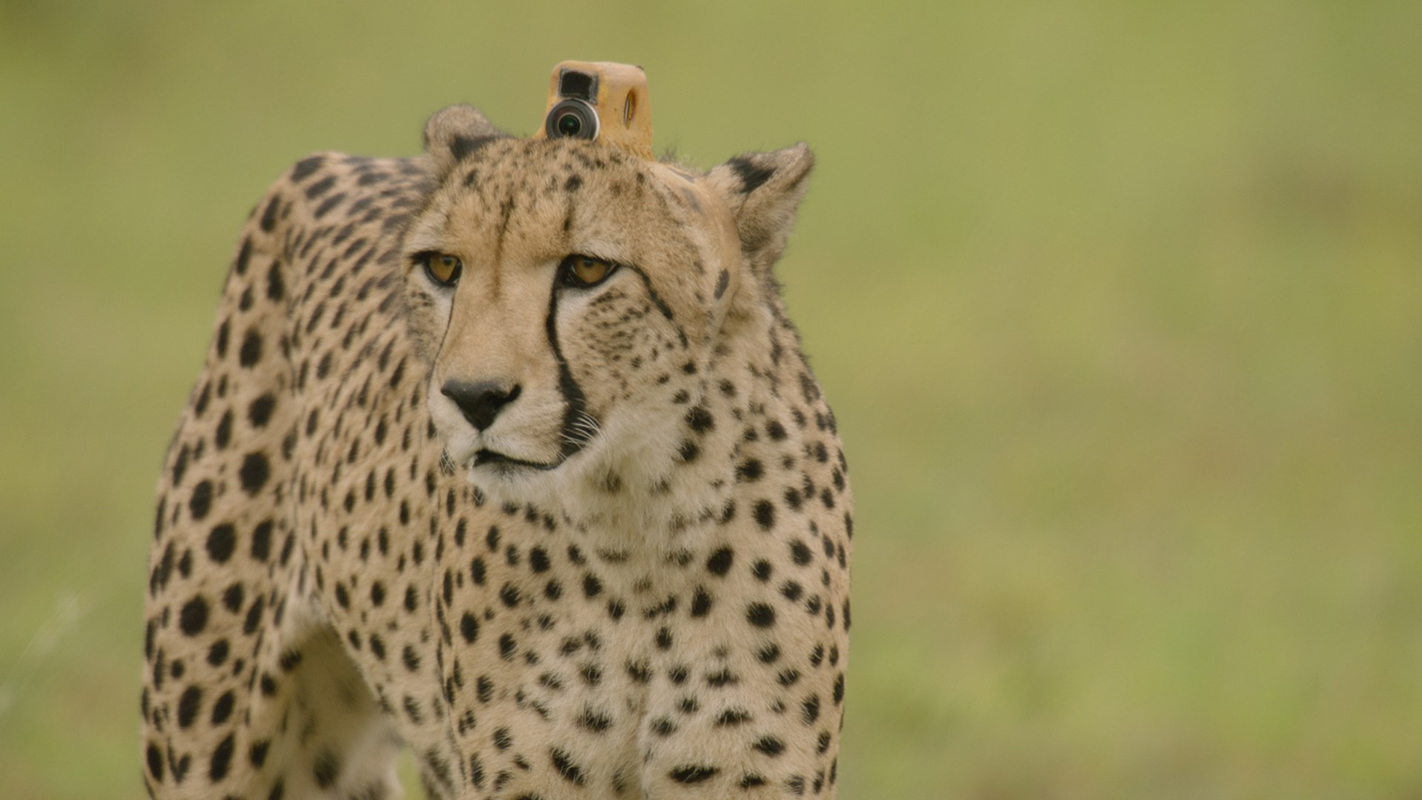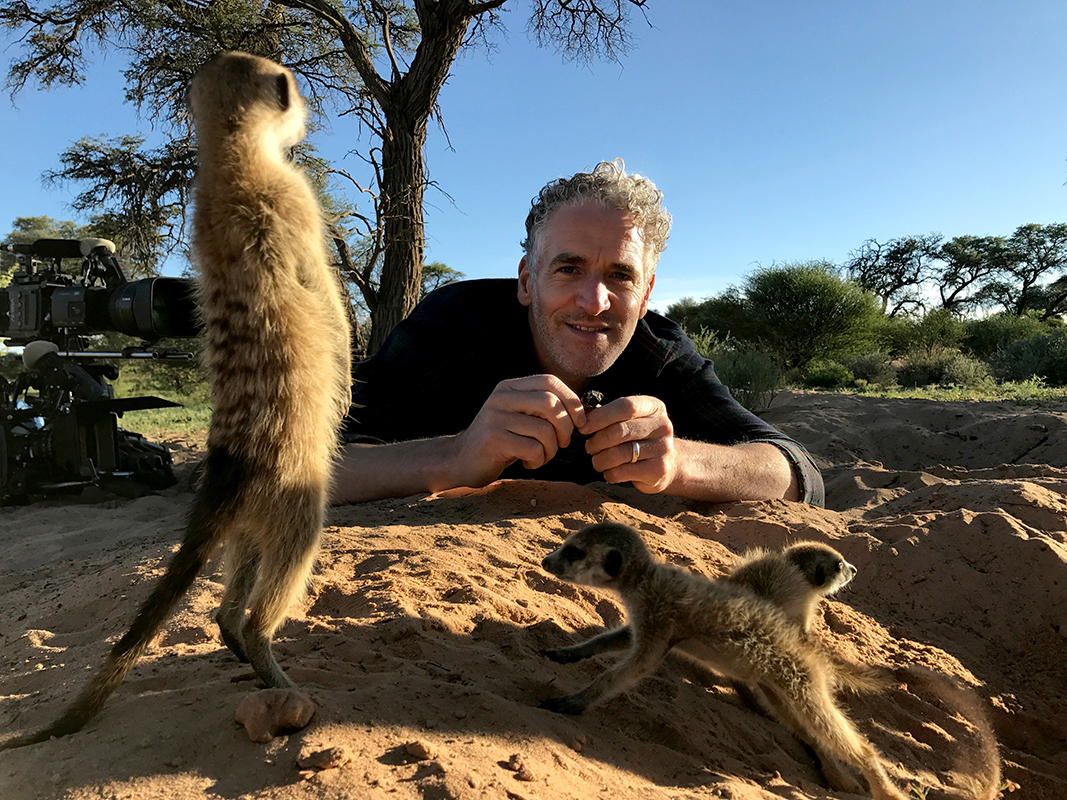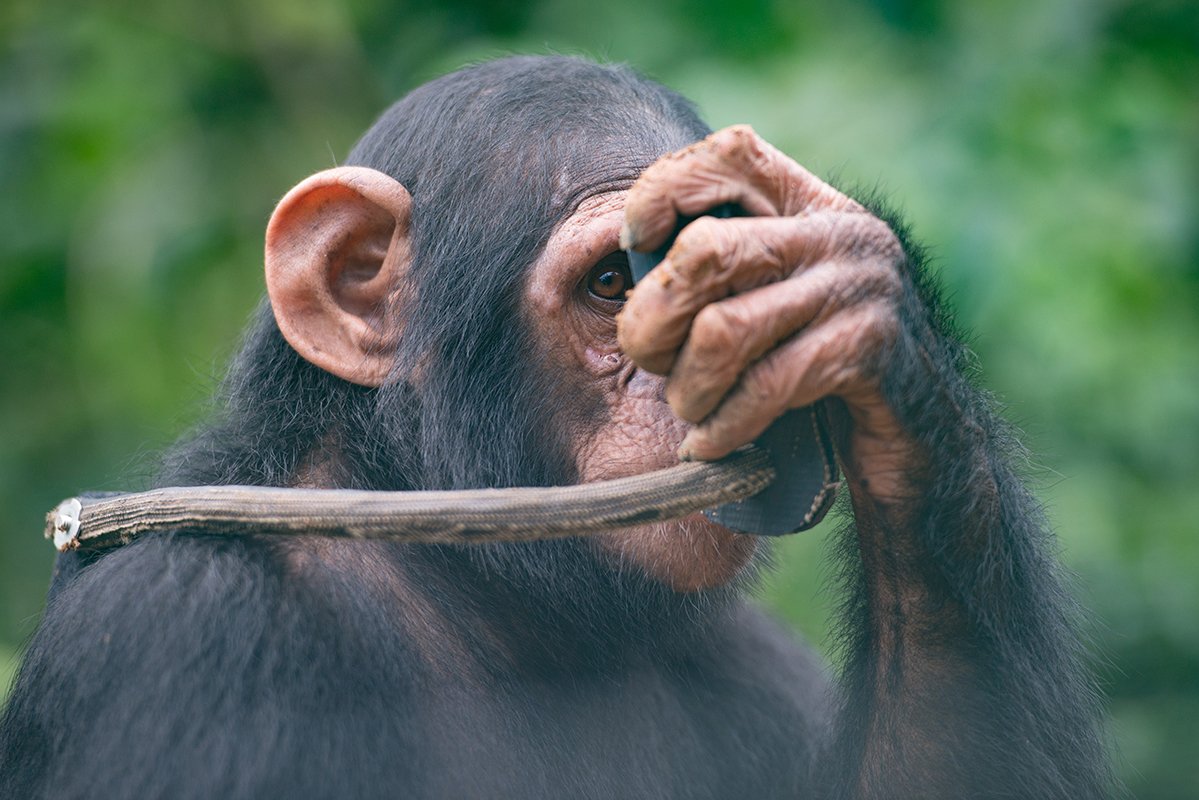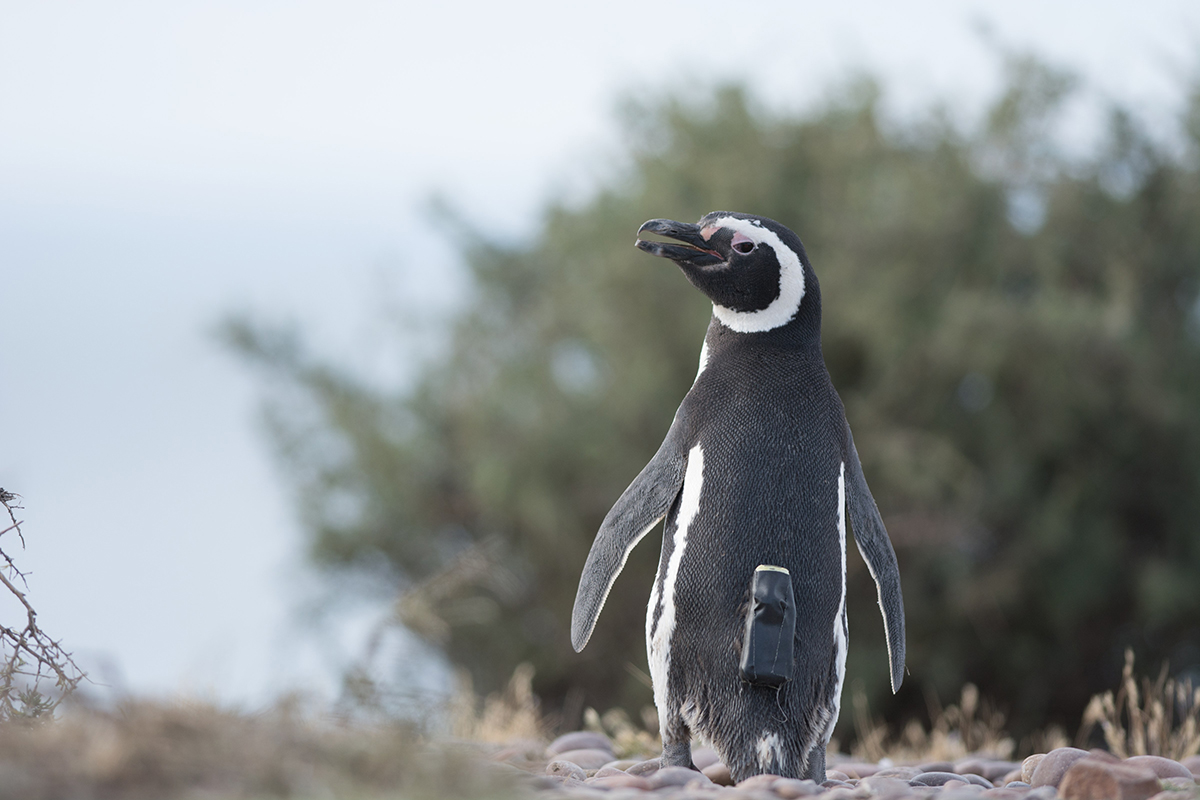Wearable Cameras Show Animals' Worlds Like Never Before

What kind of private meerkat business takes place below the ground in their tunnels and dens — places that have never been observed firsthand by humans?
What does a fish-hunting ocean dive look like to a penguin, and what's a chimpanzee’s view from the treetops?
These and other questions about the previously unknown habits of wildlife are answered for the first time in "Animals with Cameras, A Nature Miniseries," produced by the BBC. The first episode will air nationwide in the U.S. tonight (Jan. 31) on PBS at 8 p.m. EST. [Photos: Hidden Cameras Find Diverse Animals in Tropical Forests]
In this pioneering three-part documentary, filmmakers and camera designers partnered with biologists to capture unprecedented animal perspectives on land and in the oceans — including cheetahs, bears, seals and devil rays — using custom-built equipment. By outfitting animals with wearable cameras that were smaller, lighter, more sensitive and more durable than ever before, they captured high-definition footage that allows viewers to see the world through a wild animal's eyes.
Customized cameras
To reveal habitats from an animal's point of view, the filmmakers turned to a new generation of cameras, which were designed to be comfortable for a range of animal species to wear; tough enough to withstand "exploration"; and with enough battery life to shoot for hours at a time, Chris Watts, cameraman at British Technical Films and camera designer for "Animals with Cameras," told Live Science.

Wearability and battery longevity were especially important for opening a window into the animals' interactions with each other, he explained.
"A lot of thought went into the camera mounts, and how they would attach and drop off. And the weight of cameras — we had to keep them as light as possible," Watts said.
Sign up for the Live Science daily newsletter now
Get the world’s most fascinating discoveries delivered straight to your inbox.
For animals that were habituated to humans, such as the meerkats, the cameras could be attached and removed by hand, while with others — bears and devil rays, for example — the cameras were collected after a timed release.
Technical challenges and unexpected discoveries
In the first episode, cameras were fitted to meerkats in the Kalahari Desert, Magellanic penguins in South America and chimpanzees in Cameroon. Each group presented technical challenges — for the meerkats, the cameras had to be small enough for the animals to carry, but had to have enough battery life to shoot for hours in dim tunnels underground. Meanwhile, the penguin cameras, which had to be small and light, too, also had to be capable of shooting the penguins' speedy, ocean-foraging dives in deep, dark water.
But only the chimpanzees were so curious about the cameras — which hung around their necks — that they fought over who would get to wear them, "because everyone wanted one," Buchanan recalled.
"We had to create dummy cameras, so that every chimpanzee could get one," he said.

The team also needed to repeatedly update the cameras' designs to keep the chimps interested, Mimi Swift, a chimpanzee caregiver with the Sanaga-Yong Chimpanzee Rescue Center, told Live Science in an email.
"They got bored of them as soon as they had been thoroughly investigated and strength tested/destroyed, which meant we had to constantly modify them purely to keep them interesting to the chimps," she said.
But it was worth the effort. Footage of the chimps high in the treetops revealed an unprecedented glimpse of foraging and nest-building behavior, and showed the young chimpanzees developing important social skills, Swift wrote in the email. [Photos: Hidden Cameras Find Diverse Animals in Tropical Forests]
Meerkat pups and penguin dives
The meerkat footage also held surprises for the scientists. Underground at night, they were found to be unexpectedly active and vocal, calling to locate their pups and other adults, Laura Meldrum, project manager of the Kalahari Meerkat Project, told Live Science.
But the most exciting discovery was the sight of meerkat pups that were only a few hours old. Previously, the youngest pups ever seen by researchers were at least 2 to 3 weeks old, Meldrum said.
And witnessing real-time, high-definition hunting footage of Magellanic penguins as they dove after their prey was "like taking off a blindfold," Rory Wilson, a professor of zoology at Swansea University in the U.K., told Live Science.

A swimming penguin is near-impossible to observe from a boat or even from the water — "they whizz right past you," he said — and while it's possible to attach devices to the birds that gather data on their movements, underwater footage has traditionally been very poor, according to Wilson.
"It gets too dark very rapidly, it's blurry, and it makes you sick to watch it," he said.
But the new footage was exceptional. Seeing what the penguins saw as they were hunting provided critical missing information about their choices between different prey animals in the open ocean, offering a vital clue to understanding their impact on marine environments, Wilson said.
Connection and protection
Footage that captures these rare and exciting glimpses of animals' hidden habits is important to scientists, but documentaries like "Animals with Cameras" also resonate with audiences, connecting them with the beauty — and peril — of wildlife in their natural environments. Forging these connections is especially vital now, when so many creatures' habitats worldwide are threatened by human activity and human-driven climate change, wildlife cameraman Gordon Buchanan told Live Science.
"We can only truly protect something if we know how it lives on this planet," he added.
"Animals with Cameras, A Nature Miniseries" airs nationwide in the U.S. on Wednesdays from Jan. 31 through Feb. 14, 2018, at 8 p.m. EST on PBS (check local listings). Each episode will be available to stream the following day at pbs.org/nature and on PBS apps.
Original article on Live Science.

Mindy Weisberger is an editor at Scholastic and a former Live Science channel editor and senior writer. She has reported on general science, covering climate change, paleontology, biology and space. Mindy studied film at Columbia University; prior to Live Science she produced, wrote and directed media for the American Museum of Natural History in New York City. Her videos about dinosaurs, astrophysics, biodiversity and evolution appear in museums and science centers worldwide, earning awards such as the CINE Golden Eagle and the Communicator Award of Excellence. Her writing has also appeared in Scientific American, The Washington Post and How It Works Magazine. Her book "Rise of the Zombie Bugs: The Surprising Science of Parasitic Mind Control" will be published in spring 2025 by Johns Hopkins University Press.









